The Fascinating World of Ketogenic Diet: Unleashing the Power of Ketosis

Welcome to the fascinating world of the ketogenic diet, where the mechanisms of ketosis play a starring role in achieving optimal health and weight management. Delving into the physiological aspects underpinning the classic ketogenic diet is essential to embark on this low-carb, high-fat adventure. So, buckle up and get ready to explore the intricate dance of multiple fuels, including glucose, protein, fat, and the star of the show, ketones!
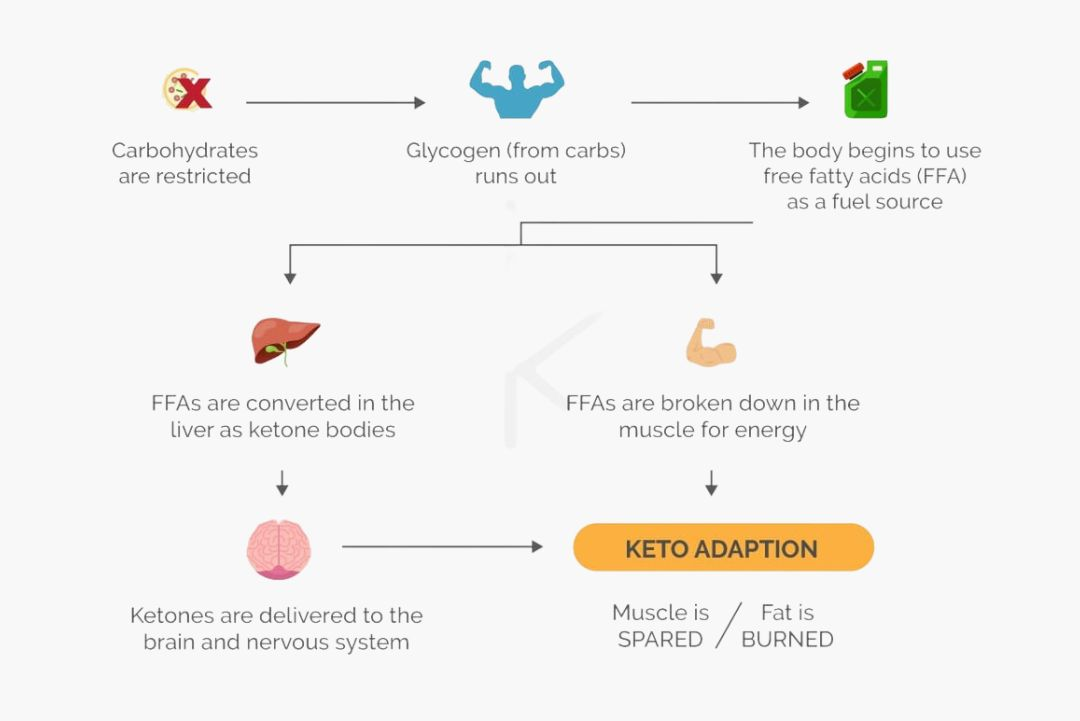
Understanding the Context: Fueling the Body's Fire
Before delving into the fascinating world of ketosis and the intricacies of the standard ketogenic diet, it's crucial to set up a solid foundation of knowledge surrounding the broader context of our body's fuel sources. By exploring the different types of fuels our bodies rely on, we can better understand the role each one plays and how the ketogenic diet influences our physiological processes.
In our daily lives, our bodies primarily rely on three primary fuel sources: carbohydrates, fats, and proteins. Carbohydrates are commonly found in foods like grains, fruits, and vegetables, providing a quick and readily available energy source. On the other hand, fats are a dense and efficient fuel source that our bodies can tap into for sustained energy. Lastly, proteins, found in foods like meat, dairy, and legumes, serve as building blocks for our muscles and other bodily tissues while providing energy when needed.
The standard ketogenic diet emphasises the consumption of high-quality fats and limits the intake of carbohydrates. By significantly reducing carbohydrate intake, the body enters a state of ketosis, shifting its primary fuel source from carbohydrates to fats. In this state, the liver converts stored fats into molecules called ketones, which serve as an alternative energy source for the body and its various organs, including the brain.
By understanding these different fuel sources and their roles, we can better appreciate how the ketogenic diet alters our body's metabolic processes. The reduction in carbohydrate intake prompts our bodies to enter ketosis, a metabolic state where fats are efficiently burned for energy production. This shift from relying on carbohydrates to using fats as the primary fuel source has numerous potential benefits, ranging from weight loss and improved insulin sensitivity to increased mental clarity and sustained energy levels throughout the day.
By delving into the science behind fuel sources and their effects on the body, we gain valuable insights into the profound impact of the ketogenic diet. With this knowledge, we can make informed decisions about our dietary choices and optimise our health and well-being by using fats as a clean and efficient fuel source.

Unveiling the Magic of Ketones: Ketone Bodies and Ketogenesis
Now, let's talk about ketone bodies, ketogenesis, and the transformative effects they have within the realm of the ketogenic diet. The term "ketone" encompasses a broad range of chemical substances. Still, for our exploration, we will focus on the triumvirate of acetoacetate (AcAc), beta-hydroxybutyrate (BHB), and acetone as the primary ketone molecules. The liver produces these ketone bodies during a process called ketogenesis, which occurs when the body shifts its fuel source from carbohydrates to fats.
When carbohydrate intake is significantly reduced and the body's glycogen stores are depleted, the liver steps in to fulfil the body's energy needs by breaking down fatty acids. This breakdown leads to the production of ketone bodies, which are then released into the bloodstream and transported to various organs, including the brain, where they serve as an alternative source of fuel.
The production of ketone bodies, particularly beta-hydroxybutyrate, has been associated with numerous metabolic benefits. Studies suggest that BHB may have a protective effect on brain health, providing a stable and efficient energy source for cognitive function. Moreover, ketone bodies have been shown to enhance fat burning, increase satiety, and regulate blood sugar levels, making them a valuable tool for weight loss and management.
As we continue our exploration, we will uncover the fascinating interplay between ketones, ketogenesis, and the body's metabolic processes. We will delve into the scientific evidence that sheds light on the potential superiority of the ketogenic approach in achieving weight loss, fat reduction, and preserving lean muscle mass compared to conventional diets.
Moreover, we will explore the lesser-known metabolic side effects that accompany the state of ketosis. These effects may include improved insulin sensitivity, reduced inflammation, enhanced energy levels, and increased mental clarity. Understanding these additional benefits will deepen our appreciation for the power of ketones and the ketogenic diet.
By familiarising ourselves with the intricacies of ketone bodies, ketogenesis, and the metabolic effects of the ketogenic diet, we open ourselves up to a world of transformative possibilities.
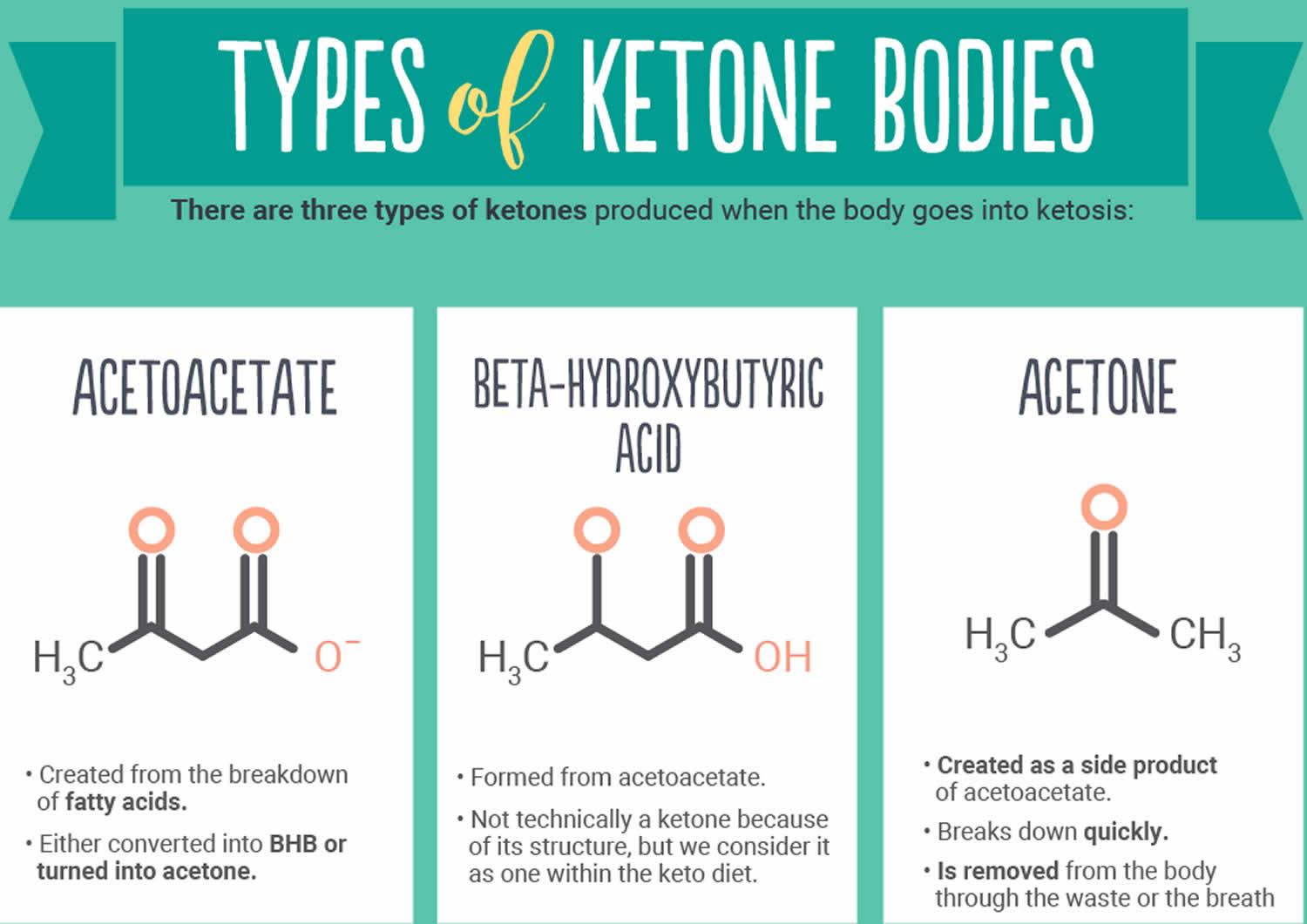
Unleashing the Power of the Ketogenic Diets
The ketogenic diet has emerged as more than just a passing fad; it is a formidable weapon for weight loss, improved metabolic markers, and overall health optimisation. By shifting our dietary focus from carbohydrates to healthy fats, we unlock the potential of entering a metabolic state known as nutritional ketosis. In this state, our bodies undergo a profound transformation, utilising stored fat as a primary source of energy. This shift in fuel preference leads to enhanced fat metabolism, resulting in rapid and efficient weight loss.
One of the key benefits of the ketogenic diet is its ability to regulate blood pressure and blood sugar levels. By reducing carbohydrate intake and stabilising insulin levels, the ketogenic diet helps to promote balanced blood pressure and optimal blood sugar control. This can be particularly beneficial for individuals with conditions such as type 2 diabetes or metabolic syndrome. Additionally, the ketogenic diet has been shown to positively impact LDL cholesterol levels by increasing the size of LDL particles and reducing their overall quantity, which is associated with a lower risk of cardiovascular disease.
Furthermore, the ketogenic diet offers numerous advantages beyond weight loss and metabolic improvements. Many individuals report increased mental clarity and focus while following a ketogenic diet. This cognitive boost is believed to stem from the steady supply of ketones to the brain, providing a stable and efficient energy source. Additionally, the ketogenic diet has been shown to reduce inflammation in the body, potentially benefiting individuals with conditions such as arthritis or autoimmune disorders.
The ketogenic diet's power lies in its ability to facilitate weight loss and its comprehensive impact on various metabolic markers. By embracing this low-carbohydrate, high-fat lifestyle, individuals can unleash the potential for improved health outcomes, enhanced energy levels, and better overall well-being.
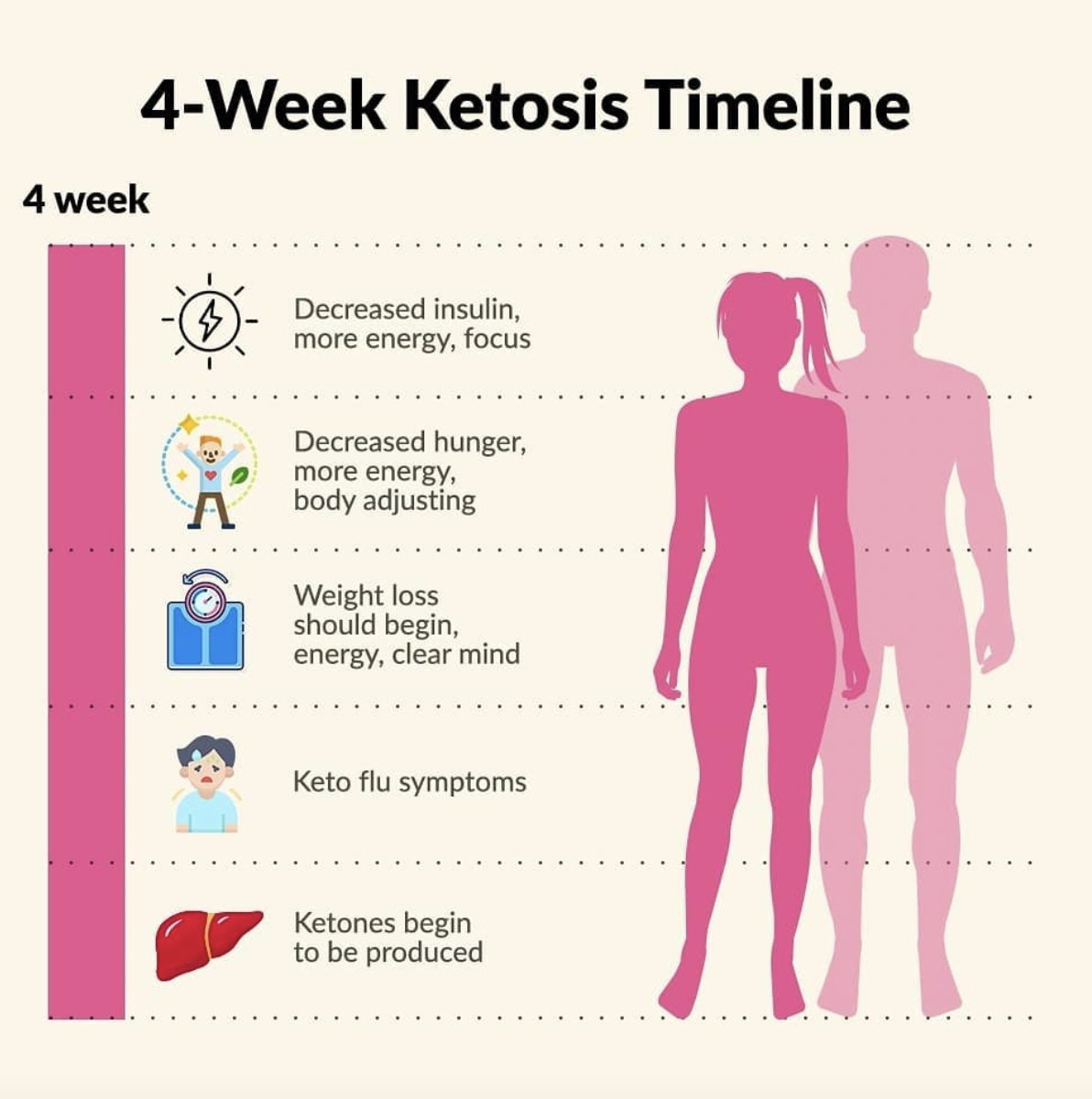
Beyond Weight Loss: Unlocking a Healthier You
The ketogenic diet isn't just about what we eat to lose weight; it's a lifestyle offering numerous advantages beyond weight loss. Studies have shown that the ketogenic diet may improve cardiovascular health, reduce the risk of fatty liver and heart disease, and support better blood glucose control. Furthermore, this diet has been associated with increased levels of healthy fats in the blood, which can positively impact heart health and decrease the risk of cardiovascular disease.
Navigating the Keto Journey: Listening to Your Body and Your Body Weight Loss
Embarking on the ketogenic diet requires attentiveness to your body's signals and a willingness to make adjustments along the way. While this eating plan holds immense potential for positive outcomes, it's crucial to acknowledge that individual experiences may vary. Paying close attention to your body's responses and understanding its unique needs is key to optimising your keto journey.
In the early stages of transitioning to a ketogenic diet, it's not uncommon to experience certain side effects, often referred to as the "keto flu." These temporary discomforts may include fatigue, headaches, irritability, and brain fog. While these symptoms can be discouraging, it's important to remember that they are typically short-lived and tend to dissipate as your body adjusts to utilising fats as its primary fuel source.
To ease the transition and alleviate keto flu symptoms, you can employ a few strategies. Firstly, ensure you properly hydrate your body and replenish electrolytes, as the reduction in carbohydrate intake can cause increased water loss. Drinking plenty of water and incorporating electrolyte-rich foods or supplements, such as sodium, potassium, and magnesium, can help maintain proper hydration and minimise potential side effects.
Another helpful approach is gradually transitioning into the ketogenic diet, allowing your body to adjust at a more manageable pace. Start by reducing your carbohydrate intake gradually while increasing your fat consumption. This gentle transition can help minimise the intensity of keto flu symptoms and allow your body to adapt more smoothly.
Additionally, it's crucial to ensure you are consuming a variety of nutrient-dense foods within the framework of the ketogenic diet. Focus on incorporating a wide range of healthy fats, high-quality proteins, and low-carbohydrate vegetables to provide your body with essential nutrients. This will help support your overall well-being and minimise the risk of potential nutrient deficiencies.
Throughout your keto journey, paying attention to your body's signals and adjusting your approach as needed is essential. Everyone is unique, and what works for one person may not work for another. Keep track of your energy levels, mood, and overall well-being to gauge how your body responds to the ketogenic diet. If you encounter any persistent or concerning symptoms, consult with a healthcare professional who can provide personalised guidance and support.
Remember, the ultimate goal of the ketogenic diet is to achieve a state of metabolic flexibility and sustainable weight loss. By listening to your body and making adjustments when necessary, you can confidently navigate the keto journey and reap the full benefits of this transformative lifestyle. Trust your body's wisdom and embark on this remarkable path toward improved health and well-being.

Mastering the Keto Plate: Essential Foods and Strategies
When it comes to the ketogenic diet, mastering your plate is crucial for success. By carefully selecting the right foods and incorporating intelligent strategies, you can optimise your journey towards ketosis and experience the full benefits of this transformative eating plan.
-
Leafy Greens and Low-carb Veggies: Make these nutritional powerhouses the foundation of your meals. Leafy greens like spinach, kale, and Swiss chard provide essential vitamins, minerals, and fibre while low in carbohydrates. Non-starchy vegetables such as broccoli, cauliflower, zucchini, and bell peppers are also excellent choices, adding colour, texture, and a wide range of nutrients to your plate.
-
Nuts and Seeds: These make for convenient and nutritious keto-friendly snacks. Almonds, walnuts, chia seeds, and flaxseeds are packed with healthy fats, fibre, and essential micronutrients. They can be sprinkled on salads, added to smoothies, or enjoyed as a crunchy topping for your meals.
-
Protein-rich Foods: Include moderate protein in your keto meals to support muscle health and satiety. Opt for high-quality sources such as grass-fed beef, organic poultry, wild-caught fish, eggs, and tofu (for vegans and vegetarians). Be mindful of portion sizes, as excessive protein intake can affect ketosis. Aim for around 20-25% of your daily caloric intake from protein.
-
Hydration and Electrolyte Balance: Proper hydration is essential for overall health and maintaining optimal bodily functions. When following a ketogenic diet, paying attention to your water intake and electrolyte balance is essential. Drink plenty of water throughout the day, and consider adding electrolyte-rich beverages or supplements to replenish vital minerals like sodium, potassium, and magnesium. This will help prevent dehydration and minimise potential side effects like keto flu.
-
Healthy Fats: Embrace healthy fats as a cornerstone of your keto plate. Avocado, olive oil, coconut oil, grass-fed butter, and ghee are excellent choices. These fats provide sustained energy, promote satiety, and support the body's transition into ketosis. Be mindful of portion sizes to maintain a calorie balance that aligns with your weight loss goals.
-
Monitoring Carbohydrate Intake: Low carbohydrate intake is fundamental to achieving and maintaining ketosis. Focus on consuming non-starchy vegetables and limit or avoid high-carb foods such as grains, sugary snacks, and processed foods. Tracking your carbohydrate intake using a food diary or mobile app can help you stay within your desired range.
By following these essential food guidelines and strategies, you can master your keto plate and unlock the full potential of the ketogenic diet. Remember that everyone's dietary needs may differ, so it's essential to listen to your body and make adjustments as necessary. With a well-balanced and nutrient-dense approach to your meals, you can enjoy the benefits of sustained energy, weight loss, and improved overall well-being on your keto journey.
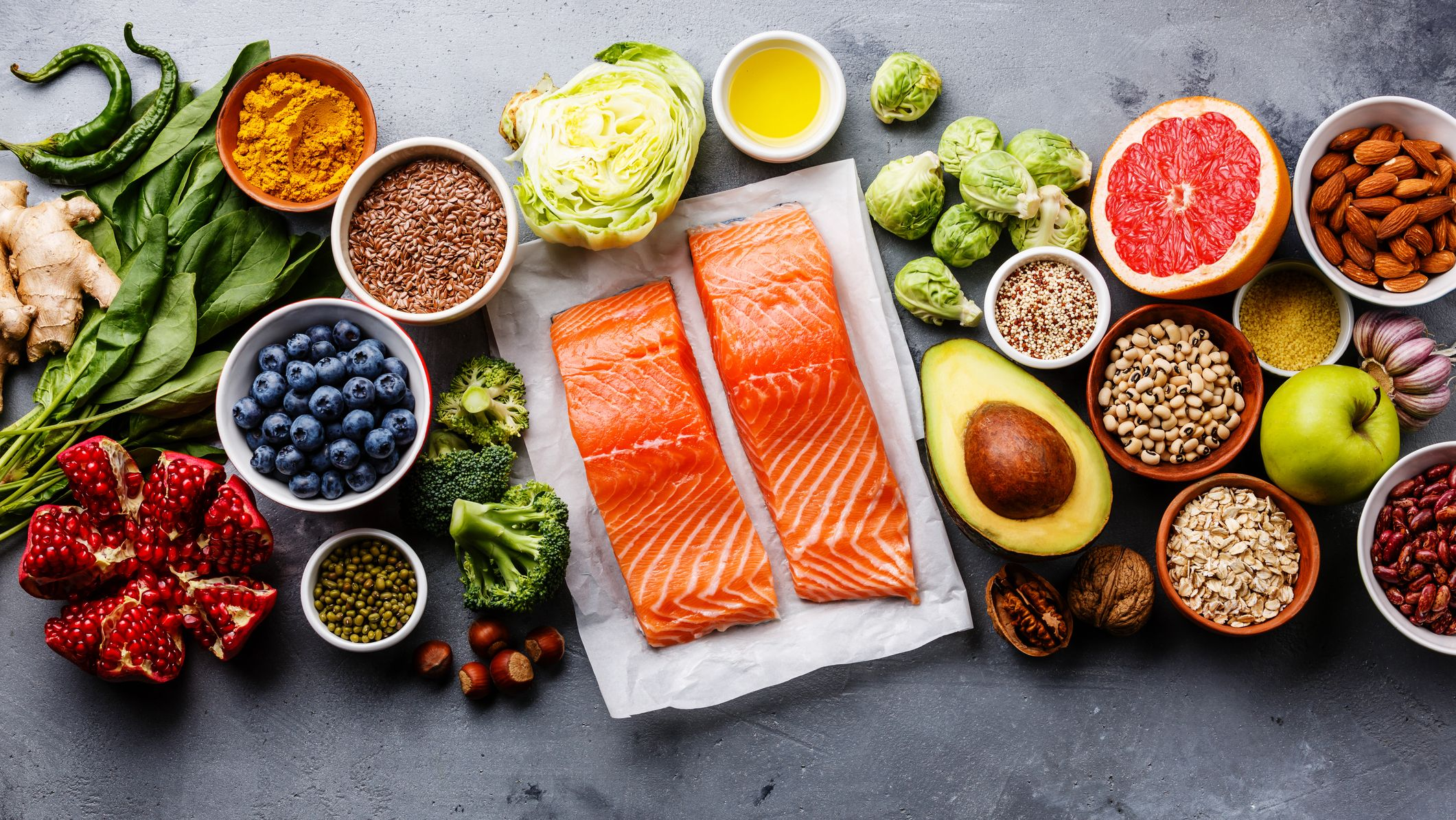
Understanding Fuel Utilisation: Unveiling the Body's Energy Reserves
To truly grasp the intricate workings of the human body and its fuel sources, we must embark on a journey into the fundamental mechanisms of fuel utilisation. By delving into how our bodies utilise various fuels, including glucose, protein, free fatty acids, and ketones, we gain invaluable insights into optimising our energy levels, overall well-being and adopting a healthy lifestyle.
The human body has four primary fuel sources: glucose, protein, free fatty acids, and ketones. Each of these fuels serves a unique purpose, and their storage within the body varies. Triglycerides, a form of fat, serve as the primary reserve fuel, predominantly stored in adipose tissue. These triglycerides can be broken down into free fatty acids and utilised by various organs and tissues throughout the body.
While glucose is often considered the body's primary fuel source, it is important to recognise that protein can also be converted into glucose through a process called gluconeogenesis. Glucose and protein act as secondary fuel sources, with varying quantities consumed depending on dietary intake and metabolic demands. The availability of carbohydrates plays a significant role in determining the body's fuel utilisation, as it influences hormone levels and overall energy usage.
Additionally, the presence of specific enzymes and the state of liver glycogen contribute to fuel utilisation. Enzymes play a crucial role in catalysing biochemical reactions, including the breakdown of fuels for energy production. The state of liver glycogen, which serves as a storage form of glucose, impacts the body's ability to access and utilise glucose as a fuel source. When liver glycogen stores are depleted, the body begins to rely on alternative fuels like free fatty acids and ketones.
By unravelling the intricacies of fuel utilisation, we gain a deeper understanding of how our bodies function and adapt to different dietary and metabolic conditions. This knowledge empowers us to make informed choices about our nutrition and lifestyle, optimising our energy levels, supporting overall well-being, and maintaining a healthy and balanced approach to fueling our bodies.
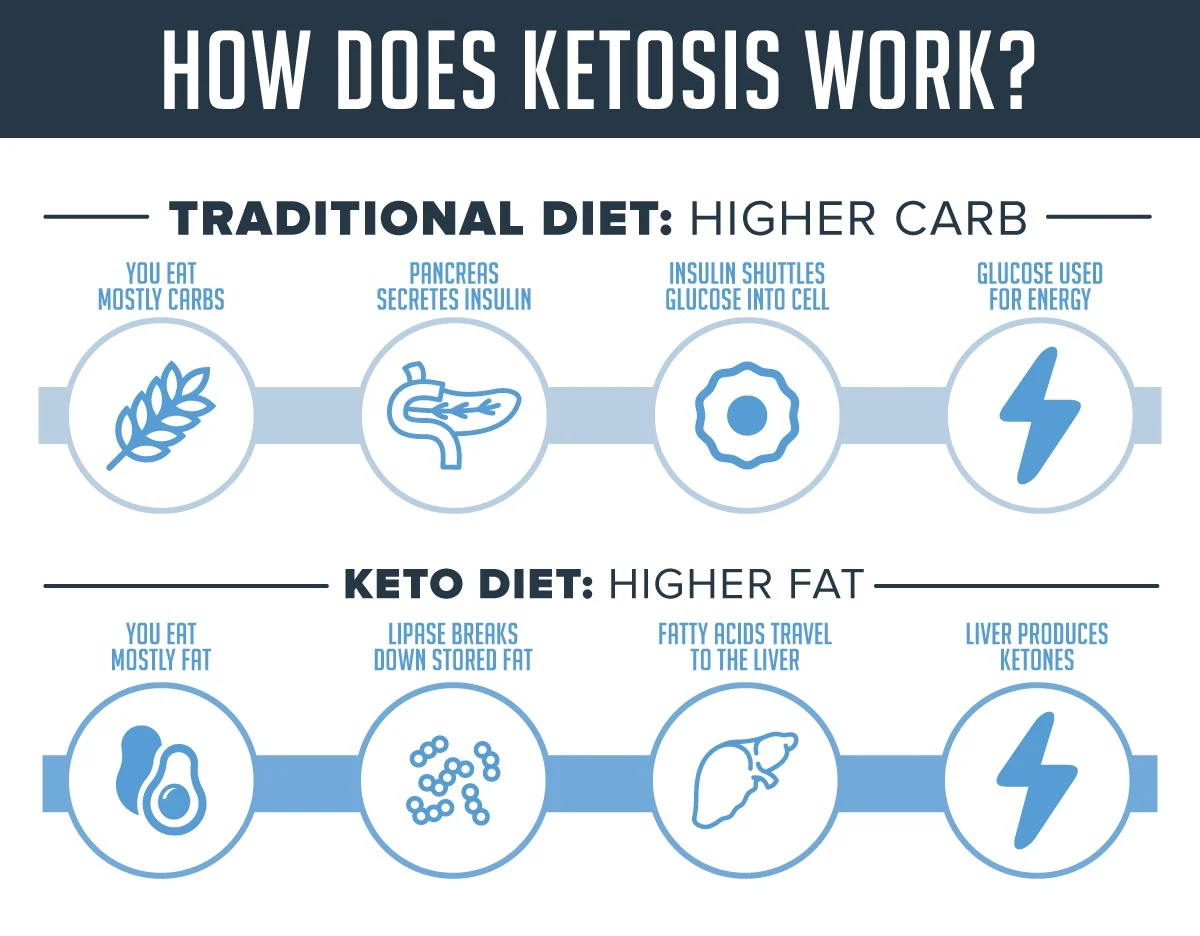
Physical Fuel Reserves: Fat, Protein, Carbohydrates, and Ketones
During caloric deprivation, the body taps into its fuel reserves to sustain vital functions. These reserves include fat, protein, carbohydrates, and ketones. Fat, stored predominantly as body fat, is the primary long-term energy storage site. The average person has sufficient body fat reserves to sustain them for several weeks or even months without consuming food. In contrast, protein can be converted into glucose in the liver and utilised as an energy source. Carbohydrate reserves, primarily stored as glycogen in muscles and the liver, provide energy for approximately one day. On the other hand, ketones play a crucial role in generating energy during fasting or when following a ketogenic diet, especially for the brain.

The Significance of Ketones and Energy Synthesis
While ketones have no significant role in energy production during a typical diet, they become vital during fasting or a ketogenic diet. In these metabolic states, ketones provide an alternative energy source, particularly for the brain. Compared to carbohydrates, protein, and dietary fat alone, carbohydrate reserves are relatively small and can only sustain energy for about a day. Although the body can theoretically rely on stored protein for a more extended period, severe protein losses will eventually lead to death. With its vast body fat reserves, adipose tissue becomes the primary site for long-term energy storage, ensuring survival during food scarcity.
Fueling the Fire: Dietary Changes and Fuel Utilisation
Now, let's explore how our dietary choices impact how our bodies use fuel. Picture this: our bodily tissues prefer specific fuels based on their bloodstream levels. If a particular fuel, like glucose, surges in our bloodstream, our body will eagerly gobble it up, utilising it as the primary energy source. On the flip side, when the levels of a particular fuel dip, our body adjusts its usage accordingly, conserving it for later. It's a fascinating dance between our body's fuel availability and its clever adaptation to prioritise what's abundant.
Enter the ketogenic diet, a low-carbohydrate, high-fat approach that revolutionises our body's fuel preferences. By restricting the availability of carbohydrates, the ketogenic diet forces our body to switch gears and rely on fat as its primary fuel source. Yes, you heard it right – fat becomes the superstar! Following a low-carb diet, our body shifts into ketosis, breaking down fat into ketones to fuel our cells. It's like flipping a metabolic switch, transforming our bodies into efficient fat-burning machines.
Understanding the intricate connections between glucose, fatty acids, and ketones allows us to fuel our bodies effectively. Whether exercising, following a specific diet, or making dietary changes, our body's fuel preferences adapt to meet the demands of our metabolic state. The ketogenic diet, in particular, harnesses the power of fat metabolism, offering a unique approach to energy production and weight management. So, let's celebrate the dynamic dance of fuels within our bodies and make informed choices that support optimal fuel utilisation for a healthier, more vibrant life!
Glucose: The Carbohydrate Connection
Regarding our body's fuel, dietary carbohydrates take centre stage as the primary source of glucose. Glucose serves as the preferred fuel for our cells, providing the energy needed for various bodily functions. However, the story doesn't end there. Enter the fascinating process of gluconeogenesis, where the liver and kidneys work their metabolic wizardry to transform other chemicals into glucose, ensuring our energy demands are met.
Gluconeogenesis, which translates to "the generation of new glucose," is a remarkable biochemical pathway that occurs primarily in the liver and, to some extent, in the kidneys. It allows our bodies to produce glucose from non-carbohydrate sources, such as specific amino acids like alanine and glutamine. This metabolic magic ensures a steady supply of glucose even when carbohydrate intake is limited or unavailable.
When glucose from dietary carbohydrates is insufficient, our body turns to gluconeogenesis to maintain blood sugar levels and meet the energy needs of vital organs and tissues. This elegant process involves a series of enzymatic reactions that convert these non-carbohydrate molecules into glucose.
First, specific amino acids, such as alanine and glutamine, are released into the bloodstream from various tissues. These amino acids are then transported to the liver, where they undergo a series of intricate transformations. Through a combination of enzymatic reactions, these amino acids are stripped of their nitrogen groups, forming intermediates that can be converted into glucose.
The liver plays a crucial role in gluconeogenesis, as it houses the necessary enzymes and metabolic machinery to carry out this process efficiently. Once glucose is synthesised in the liver, it is released into the bloodstream, where it can be transported to cells throughout the body to provide the energy necessary for their functioning.
Gluconeogenesis is a finely regulated process controlled by a complex interplay of hormones and cellular signalling pathways. Hormones like glucagon, cortisol, and growth hormone stimulate gluconeogenesis, while insulin, produced in response to elevated blood glucose levels, inhibits this process.
The ability to generate glucose from non-carbohydrate sources through gluconeogenesis showcases our bodies' incredible adaptability and resilience. It ensures that our energy demands are met, even when carbohydrate intake is limited or during periods of fasting.
Understanding the role of gluconeogenesis highlights the dynamic nature of our metabolism and the body's innate ability to maintain blood glucose levels within a narrow range. It also underscores the importance of a well-balanced diet that provides an adequate supply of carbohydrates, proteins, and fats to support optimal metabolic functioning.
So, the next time you enjoy a meal rich in carbohydrates or explore the world of fasting, remember the remarkable process of gluconeogenesis, ensuring that our bodies have the energy they need to thrive and adapt to various dietary and metabolic conditions.
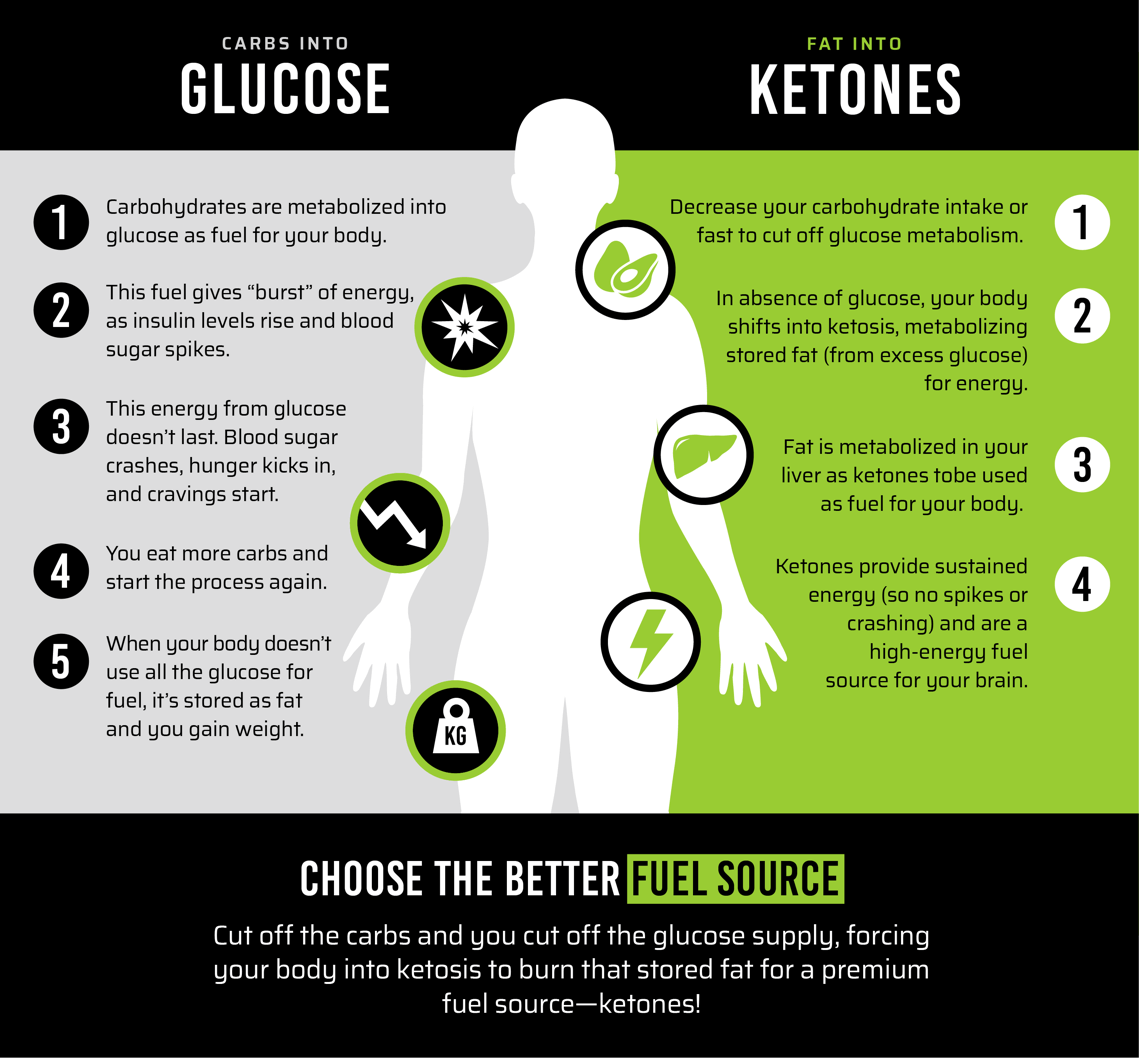
Not Just Protein Savers, but Fat Guardians Too
Carbohydrates have long been celebrated for their role in sparing proteins by reducing their breakdown for glucose production. This phenomenon is indeed noteworthy, as it helps preserve precious proteins and ensures they can fulfil their vital functions within the body. However, while we often focus on this protein-sparing aspect, we tend to overlook another crucial talent of carbohydrates – their impact on fat utilisation. Yes, carbohydrates have a significant influence on our body's ability to tap into its fat stores and burn fat for fuel.
In a high-carbohydrate diet, where the majority of our calories come from carbs, our body's reliance on fat as an energy source is limited. When carbohydrates are abundant, the body prefers to utilise glucose from carbohydrates as its primary fuel. As a result, the utilisation of stored fat is diminished, as the body doesn't need to tap into these reserves for energy.
This "fat-sparing" effect of carbohydrates can affect individuals looking to optimise their fat-burning potential and achieve weight loss goals. When our body's reliance on carbohydrates is reduced through a low-carb or ketogenic diet, it is forced to turn to alternative fuel sources. Without glucose from carbohydrates, the body shifts its metabolism and starts breaking down stored fats into fatty acids and ketone bodies. These ketones can then be used as a source of energy, including for vital organs such as the brain.
By reducing carbohydrate intake and promoting fat utilisation, we can tap into our body's vast fat stores and embark on a journey of efficient fat metabolism. This shift in fuel preference allows for sustained weight loss and reduced overall body fat percentage.
It's important to note that fat utilisation doesn't imply that carbohydrates are entirely detrimental to our health. Carbohydrates provide quick energy, support certain physiological processes, and fuel intense physical activities. However, understanding the impact of carbohydrate intake on fat utilisation can help us make informed choices about our dietary composition and prioritise our health and wellness goals.
By adopting a low-carb or ketogenic approach, we can train our bodies to become efficient fat burners. This metabolic adaptation promotes weight loss, enhances our body's ability to tap into stored fat for energy, and contributes to healthier body composition. Combined with a well-balanced diet and regular physical activity, this fat-sparing effect of carbohydrates can help us achieve our desired health and fitness outcomes.
Low-Carbohydrate Diet and the Muscle Myth
Ever heard the myth that low-carb or keto diets can cause muscle loss? Let's debunk that misconception. During the initial days of fasting or a ketogenic diet, when glucose availability is low, and requirements are high, our body turns to its own protein reserves to create glucose. However, fear not! Adequate protein intake during the early stages of a ketogenic diet can prevent muscle loss by providing the necessary amino acids for gluconeogenesis. So, rest easy knowing that your muscles are safeguarded while you embark on your low-carb or keto diet adventure.

Alternate Fuels: The Glucose-Free Pathway
In settings where glucose availability is limited, and the demand for fuel is high, our body switches gears, relying on alternative energy sources. As levels of free fatty acids (FFA) and ketones rise, the need for gluconeogenesis from protein decreases. These alternate fuels become the show's stars, allowing our body to balance energy while sparing precious proteins from being sacrificed for glucose production.
Understanding the intricate dynamics of fuel utilisation brings us one step closer to unlocking the secrets of a well-fueled body. While glucose takes the spotlight in most tissues, the heart dances to its own rhythm, embracing glucose, FFA, and ketones. By embracing low-carb diets and ketogenic lifestyles, we unleash the power of weight loss while preserving muscle mass. So, fuel your body wisely, embracing the energy-giving properties of healthy fats, leafy greens, and an overall low-carb, high-fat approach. It's time to embark on a journey towards a healthier, more vibrant life where our body burns fat efficiently, and energy abounds. Let the dance of fuel begin!
Free Fatty Acids (FFA): A Versatile Fuel
In the presence of FFA, numerous bodily tissues can efficiently utilise this fuel source. FFA is prominent in meeting their energy needs, from the heart to organs and skeletal muscles. However, some exceptional tissues cannot tap into the energy potential of FFA alone. The brain, red blood cells, renal medulla, bone marrow, and Type 2 muscle fibres are examples of such tissues that heavily rely on glucose for fuel. But here's where the plot thickens – the myth of the brain's exclusive dependence on glucose unravels.
Ketones: The Brain's Fuel of Choice
Contrary to popular belief, the brain is not solely reliant on glucose. While glucose serves as its preferred fuel, the brain demonstrates remarkable adaptability. In the presence of ketones, the brain readily shifts gears and utilises them as an alternative energy source. In fact, following adaptation, the brain can derive up to 75% of its total energy requirements from ketones. Ketones provide the brain with a fuel source derived from fat when carbohydrates are scarce.
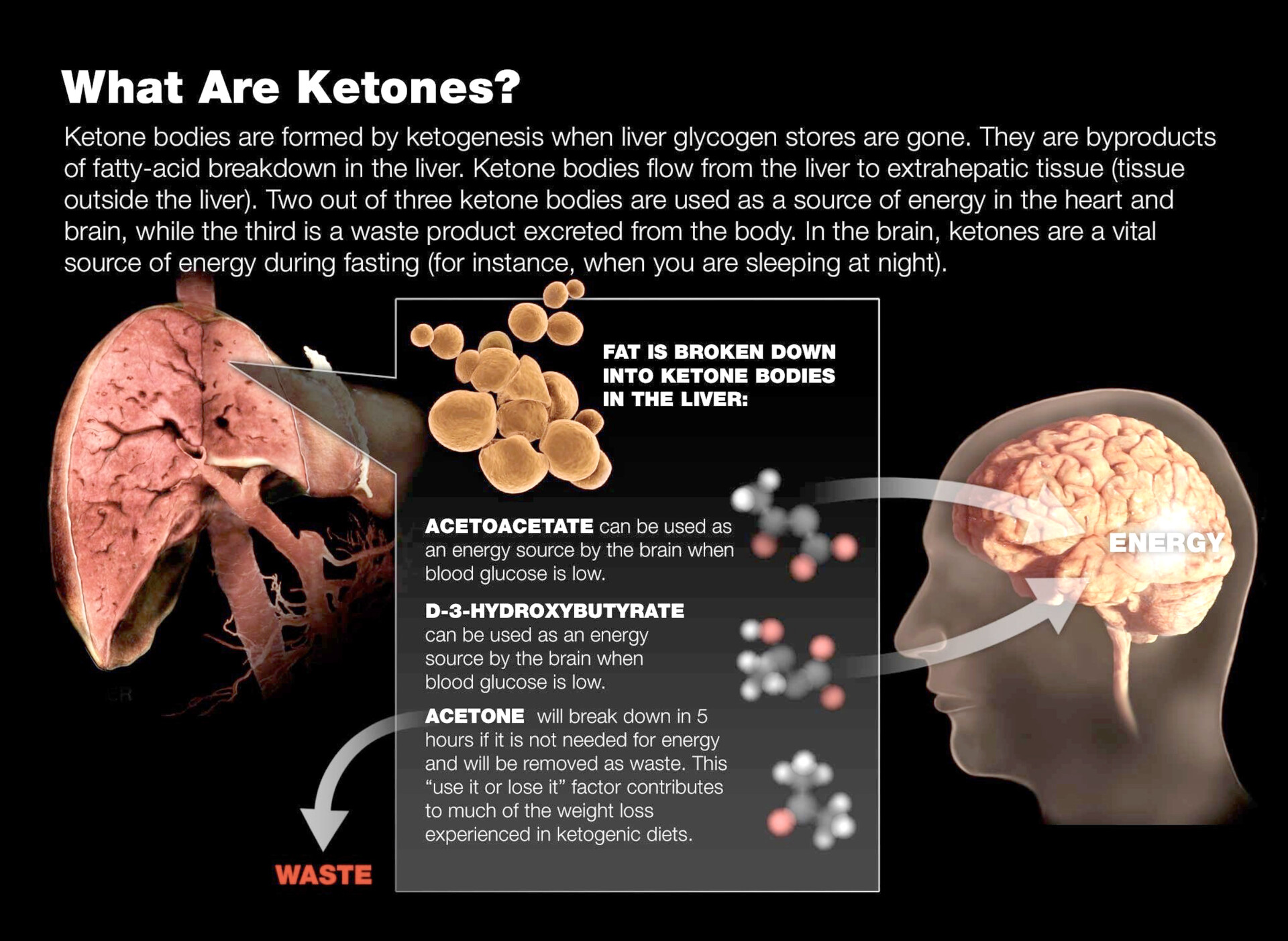
Ketones: Fueling the Body's Energy Needs
Similar to glucose and FFA, the utilisation of ketones by the body depends on their availability. Under normal dietary circumstances, ketone concentrations remain relatively low, offering only a modest amount of energy to the body's tissues. However, as ketone concentrations rise, various tissues fulfil some energy requirements through ketones. Some studies suggest that ketones might be the preferred fuel for many tissues. For instance, the liver relies on FFA rather than ketones as its primary fuel source. By the third day of ketosis, FFA and ketones become the predominant sources of non-protein fuel.
The intricate interplay between glucose, FFA, and ketones showcases the adaptability and flexibility of our body's energy metabolism. While glucose remains crucial for several tissues, the brain defies the myth of its exclusive reliance on glucose by readily utilising ketones as an alternative fuel source. As we delve into the world of ketosis, we unlock the potential of ketones to fuel our body's energy needs, providing an efficient pathway derived from fat. It is a testament to the body's remarkable adaptability and serves as a reminder that fuel utilisation is a dynamic process. So, embrace the potential of ketones, tap into the energy reserves of FFA, and let your body's metabolism embark on a fascinating journey towards optimal performance and vitality.
Navigating the Complexities of Ketone Utilisation and the Impact of Carbohydrates
As we delve deeper into ketosis, we uncover fascinating insights into utilising ketones by our body's tissues. While many tissues initially embrace ketones as a significant energy source, an intriguing shift occurs by the third week of ketosis. Most tissues, excluding the brain, experience a decline in their utilisation of ketones as specific enzymes responsible for ketone usage are downregulated. Instead, these tissues predominantly rely on the breakdown of Free Fatty Acids (FFA) to fulfil their energy needs. This adaptation is believed to ensure an ample supply of ketones for the brain, which heavily relies on this fuel source.
However, it's important to note that ketones only appear in the bloodstream when the body increases its utilisation of FFA, except in individuals with Type I diabetes. This suggests a correlation between the usage of FFA and the concurrent use of ketones as fuel. Hence, we can combine these two fuel sources to comprehensively understand energy metabolism.
The Role of Carbohydrates in Weight Gain
While it is widely believed that additional dietary carbohydrates contribute minimally to weight gain, certain circumstances can bypass the typical limitations of DNL and lead to fat cell deposition. This occurs when muscle and liver glycogen levels are already at capacity and excessive carbohydrates are consumed. A prime example of such a situation arises when individuals consume an abundance of calories and carbohydrates while leading a sedentary lifestyle.
The Intricacies of Inactivity and High-Carb, High-Fat Diets
Inactivity, combined with an extremely high food intake of both carbohydrates and fat, significantly exacerbates the risk of weight gain. When individuals remain idle and simultaneously consume excessive calories from carbohydrates and fat, the likelihood of weight gain becomes more pronounced. This underscores the importance of maintaining a balanced and active lifestyle to support overall health and weight management.
A nuanced understanding emerges as we journey through the complexities of ketone utilisation and the impact of carbohydrates. While ketones initially serve as a vital fuel source for various tissues, their significance diminishes over time, with most tissues shifting towards FFA utilisation. The interplay between FFA and ketones sheds light on the dynamic nature of our body's energy metabolism. Additionally, we gain insights into the role of carbohydrates in weight gain, where excess intake, combined with inactivity, can override natural fat-burning mechanisms. By embracing a holistic approach to nutrition, physical activity, and mindful carbohydrate consumption, we can optimise our body's energy utilisation and strive for a healthy, balanced lifestyle.

The Myth of Strict Fat Food Restriction for Weight Loss
When shedding those stubborn pounds, there has been a prevailing notion that strictly limiting fat is the key to success. The underlying belief is that reducing fat intake will prevent the body from storing it due to the presence of incoming carbohydrates. However, the ketogenic diet presents a different perspective on this matter. To truly tap into the body's fat-burning potential, the focus shifts to minimising carbohydrate consumption to the absolute minimum.
Factors Influencing Fuel Combination and Utilisation
Several factors come into play when determining the combination of the body's fuels. Firstly, the quantity of each macronutrient (protein, carbohydrates, fats, and alcohol) consumed plays a crucial role and influences other factors. Secondly, hormone levels, such as insulin and glucagon, closely tied to the types of foods consumed, act as secondary factors. The third element revolves around the body's biological reserves of each nutrient, including fat stores and muscle/liver glycogen. Lastly, the breakdown and utilisation of fat and glucose are regulated by specific enzymes, which can be modified through dietary and exercise interventions.
Unravelling the Impact of Nutrient Consumption
Humans derive calories from four primary sources: carbohydrates, proteins, fats, and alcohol. The body's fuel choice depends on the availability and concentration of these substances in the bloodstream. Carbohydrate intake directly influences glucose utilisation as the body strives to maintain glycogen reserves at an optimal level. Increasing carbohydrate consumption leads to an uptick in carbohydrate usage and vice versa. On the other hand, protein oxidation adjusts somewhat to protein intake, ensuring the stability of protein reserves.
Interestingly, dietary fat consumption has a minimal direct impact on fat utilisation. Instead, alcohol and carbohydrate intake indirectly affect the body's ability to utilise fat as fuel. Alcohol consumption significantly hampers fat utilisation, while a low-fat diet prioritises carbohydrate usage over fat oxidation. Therefore, fat oxidation occurs at higher rates when following a low-carb diet.
The Powerful Influence of Insulin and Its Role in Fuel Metabolism
Regarding regulating fuel utilisation in the human body, insulin takes centre stage as the primary hormone. Released by the pancreas in response to elevated blood glucose levels, insulin significantly impacts other hormones and the overall metabolic process. Let's delve into the intricate relationship between insulin and fuel utilisation.
Insulin's primary function is maintaining blood sugar levels within a narrow range of 80 to 120 mg/dl. When blood glucose levels rise, as triggered by dietary carbohydrates, the pancreas releases insulin to bring them back to normal. Excess glucose in the bloodstream is stored as glycogen in the muscles or liver in response to elevated insulin levels. Also, alpha-glycerophosphate is stored in fat cells as a reservoir for extra glucose. Furthermore, free amino acids, the building blocks of proteins, are transported into muscle cells and contribute to protein synthesis. Simultaneously, insulin promotes fat storage and lipogenesis, the production of new fat.
Even trace amounts of insulin are sufficient to inhibit the release of Free Fatty Acids (FFA) from fat cells. Insulin's main objective is to maintain blood sugar levels within the desired range by regulating fuel usage. Carbohydrates induce the most significant rise in blood glucose levels, consequently triggering a substantial increase in insulin production. Protein, although leading to a lesser peak in insulin release, can also be converted to glucose to some extent. Additionally, large quantities of ketone bodies and FFA can stimulate insulin release, albeit to a lesser extent than carbohydrates or protein.
As insulin levels decline, triggered by factors such as exercise or carbohydrate restriction, other hormones, notably glucagon, come into play. In this hormonal shift, the body focuses on burning stored fuels. Triglycerides stored in fat cells are broken down into glycerol and fatty acids, which are then released into the bloodstream for utilisation. Proteins can be disassembled into amino acids, which serve as building blocks for glucose production. The liver, acting as a glycogen reservoir, converts stored glycogen into glucose, which is then delivered into the bloodstream. These molecules become available as fuel for the body's energy needs.

The intricate interplay between insulin and other hormones in fuel utilisation is a fascinating aspect of human metabolism. Insulin's primary role is to maintain blood sugar levels within a specific range, predominantly by regulating the storage and usage of glucose. As insulin levels decrease, triggered by various factors, the body shifts its focus to mobilising stored fuels, such as triglycerides and proteins, to meet energy requirements. Understanding the dynamics of these hormonal responses provides valuable insights into how our bodies adapt and utilise different fuel sources.
Type 1 diabetes, also known as Insulin Dependent Diabetes Mellitus (IDDM), is a medical condition characterised by the inability to produce insulin. This abnormality in the pancreatic organ renders individuals with Type 1 diabetes utterly reliant on external insulin administration to maintain normal blood sugar levels. Understanding this crucial distinction becomes essential when discussing the difference between dietary-induced ketosis and a dangerous condition known as diabetic ketoacidosis.

While insulin takes the spotlight in fuel metabolism, its counterpart, glucagon, plays an equally significant role. Produced by the pancreas as a peptide hormone, glucagon is opposed to insulin, primarily focused on maintaining blood glucose levels. When blood glucose levels dip below normal, glucagon springs into action, stimulating the liver to release glycogen into the bloodstream. Exercise, protein-rich meals, decreased blood sugar, or reduced insulin levels trigger glucagon production. Notably, high insulin levels inhibit the secretion of glucagon.
Under normal circumstances, glucagon has minimal impact on tissues other than the liver. However, when insulin levels are deficient, as seen during carbohydrate restriction and exercise, glucagon is limited in breaking down muscle glycogen and mobilising fat. In addition to sustaining blood glucose during low blood sugar situations, glucagon plays a crucial role in ketone body synthesis. It should be apparent from the preceding descriptions that insulin and glucagon exert opposing effects on each other. Insulin acts predominantly as a storage hormone, enhancing the body's ability to store glucose, protein, and fat. Conversely, glucagon's primary function is to mobilise these fuel reserves for the body's energy needs. The insulin/glucagon ratio (I/G ratio) holds greater significance than the absolute levels of either hormone, particularly concerning the generation of ketone bodies.
In conclusion, the ketogenic diet unlocks the power of ketosis, offering remarkable benefits for health and well-being. Shifting to a high-fat, moderate protein, and low-carb approach transforms our bodies into efficient fat-burning machines. Ketosis enhances weight loss, energy levels, mental clarity, and disease prevention. It shows promise in managing epilepsy, diabetes, and neurodegenerative disorders. Seek professional guidance, listen to your body, and find the right balance of nutrients. Embrace the ketogenic diet to unleash boundless energy, mental focus, and vitality. Tap into your body's incredible potential.















